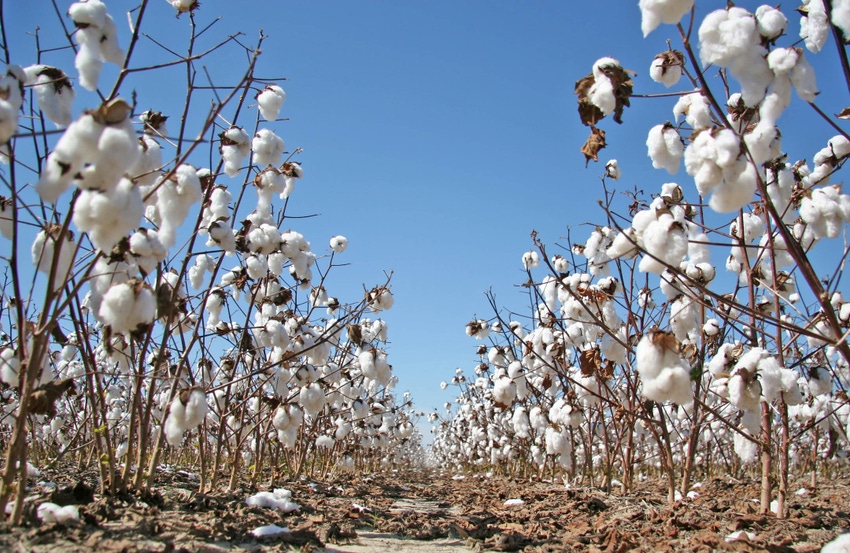
Louisiana witnessed a shift from root-knot to reniform nematodes in the late 1980s and 1990s. “We conducted nematode survey work in cotton in the mid-1990s, and found that 50 percent of the fields had reniform and only 25 percent had root-knot,” says Louisiana State University AgCenter plant pathologist Charles Overstreet.
“However, we’re now moving slightly back in the other direction because we’re rotating more with corn; we’re now finding a mixture of both reniform and root-knot in cotton fields. Corn is a host for root-knot, but not reniform, so yearly rotation helps manage reniform nematodes. Many Louisiana growers now plant one year with cotton and one with corn.”
In addition to yearly rotation, some Louisiana cotton growers plant root-knot-nematode-resistant cotton varieties in fields where a root-knot problem has been identified. “For example, some of the newer Phytogen varieties contain two genes that help control root-knot,” Overstreet says. “Phytogen 427 offers pretty strong resistance to root-knot.”
Planting resistant varieties helps control root-knot, but high levels of nematodes might also require using a nematicide. “In Louisiana, the most popular nematicide seed treatment is Avicta Complete Cotton,” Overstreet says. “Avicta Complete Cotton controls both root-knot and reniform nematodes when populations are low to moderate. A newer nematicide tool is Velum Total, which is applied in-furrow. In fields with very high levels of nematodes, growers might want to use both a seed treatment and an in-furrow treatment, providing dual methods of control.
“We also use a little Telone, a fumigant that is put out a week to 10 days ahead of planting, or it can be applied in the fall. We especially use the product in a site-specific manner where you just treat areas instead of the whole field.
“We have used Veris EC soil mapping data to help us identify management zones in a field based on soil texture where you’re likely to have nematode damage. You might not have to use Telone in other zones where the soil is a little heavier or has a clay content deeper in the soil profile.
“If you don’t know where to use site-specific in a field with variable soil textures, I recommend putting out several 6- or 12-row Telone strips in a field to see where you get a response and where you don’t.
“Additionally, when using site-specific, you need to be sure you have a problem field. So sample to see what levels of nematodes are present. If possible, divide a field into EC zones so you sample within a similar soil type rather than across the whole field.”
Root-knot nematodes favor a coarse textured soil like sandy soils; reniform thrives best in a silt loam soil. “Cotton sustains more damage in sandy soils that don’t have the water-holding capacity or nutrient-holding capacity to withstand root stress caused by nematodes,” Overstreet adds. “Low levels of nematodes can cause a lot of injury in sandy soils, while it takes a lot more to cause injury in some of the heavier soils.”
Tennessee situation
Tennessee cotton growers can face root-knot and/or reniform nematodes, says University of Tennessee plant pathologist Heather Kelly. The state’s population of root-knot nematode is mainly confined to sandy Delta fields while reniform nematode is scattered throughout other areas that mainly plant continuous cotton.
“The top control measure for reniform nematodes is rotation to a non-host crop, such as corn,” Kelly says. “For root-knot, one control option growers can use is planting a resistant cotton variety.”
Kelly notes that some Tennessee growers use a nematicide seed treatment in fields where they know they have nematodes, and where they plant continuous cotton. “We have several good options, including Poncho/VOTiVO or Aeris seed treatments,” she says. “Additionally, where nematode levels are high, growers can also apply Vydate early season on emerged cotton.”
Mississippi
Reniform nematode has been an issue in Mississippi cotton production systems for some time now, according to Mississippi State University plant pathologist Tom Allen. “We need to do a better job of managing nematodes because we now have a really big problem on our hands,” he says. “I think we have an increasing issue with both root-knot and reniform in cotton. A lot of that can be attributed to the loss of Temik.
“Additionally, even though nematicide seed treatments have been available for years, they are only good in locations that have a low-to-moderate nematode problem. Most of the areas where we have a nematode problem have populations that are well above the economically damaging threshold.”
Allen says the best management practice for controlling nematodes is first determining if you have a problem. Soil sampling to determine the nematode composition is the most important first step. Once that’s accomplished, growers can determine the best crop to place in that particular field.
“Managing reniform nematode can be achieved via crop rotation,” he says. “Corn is a non-host for the reniform nematode so rotation to corn for one to two years will reduce the soil populations of the nematode.
“Root-knot management is a little more difficult. Corn, cotton and soybean are all hosts for the southern root-knot nematode. Managing that particular nematode is best achieved with a resistant cotton or soybean variety or planting peanuts if the particular soil class will support peanut production.”
About the Author(s)
You May Also Like




